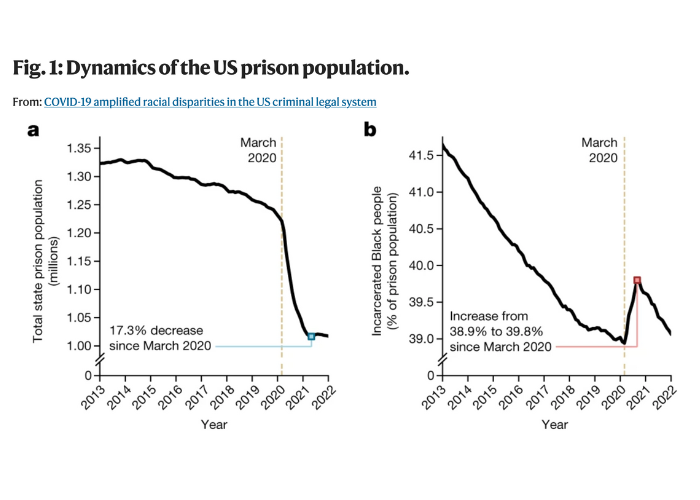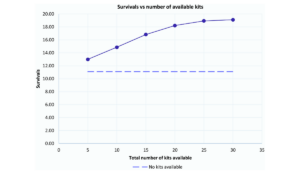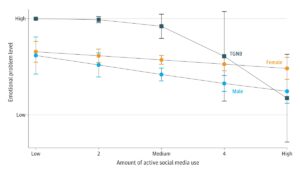Racial Inequalities in COVID-19 Early Prison Release
While the total prison population decreased during the first year of the COVID-19 pandemic, the proportion of Black people in state prisons increased.

Read Time: 2 minutes
Published:
The history of the United States prison system is grim; inmates have been subjected to forced labor, solitary confinement, and medical experimentation. The COVID-19 pandemic demonstrated the lingering impact of unjust incarceration practices. Prisons and jails were overcrowded at the start of the pandemic, and as the epidemic spread to correctional facilities, institutions were unprepared to limit the spread of COVID-19 within their walls.
Many state systems enacted temporary policies to limit the number of incarcerated individuals during the pandemic. These policies included programs such as early release and deferred sentencing. Throughout 2020, the number of incarcerated individuals decreased by 17%.
Brennan Klein and colleagues studied how the decrease in the number of incarcerated affected racial fairness in jails. The researchers hypothesized that the COVID-19 release policies exacerbated racial inequities in the justice system. To explore this question, they gathered demographic data on the total number of incarcerated individuals in the U.S. between January 2013 and January 2022.

Graph A (left) shows the decrease in the prison population over time, while graph B (right) shows the percent of the incarcerated population that was Black during the same time frame. The dotted line on each graph indicates the start of the COVID-19 pandemic. While the total prison population decreased, the proportion of Black people in state prisons increased during the first year of the pandemic. Notably, the prison population decrease during 2020 was driven by the disproportionate release of White inmates.
Eligibility for early release was determined by standardized assessment tools. Klein and colleagues researched the impact of COMPAS, a widely used risk tool employed by many states to determine eligibility for parole. Inmates had to exhibit a ‘medium’ or ‘low’ risk of reoffending to qualify for early release. Many studies have highlighted growing concerns for the accuracy and ethics of COMPAS which, on average, labels Black individuals twice as likely to reoffend compared to White individuals and may in part explain the racial differences seen during the incarceration decline of 2020.
Databyte via Brennan Klein, C. Brandon Ogbunugafor, Benjamin J. Schafer, et al. COVID-19 amplified racial disparities in the US criminal legal system. Nature, 2023.



